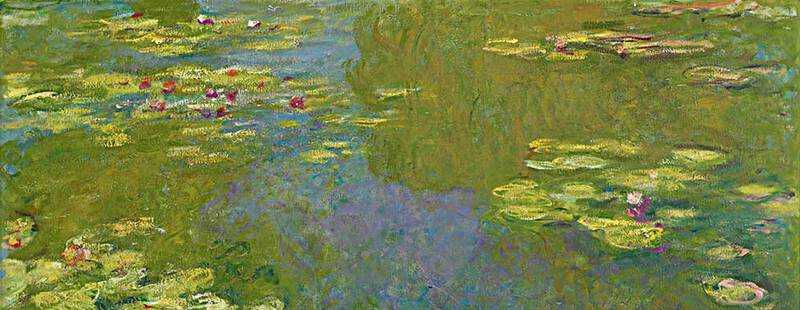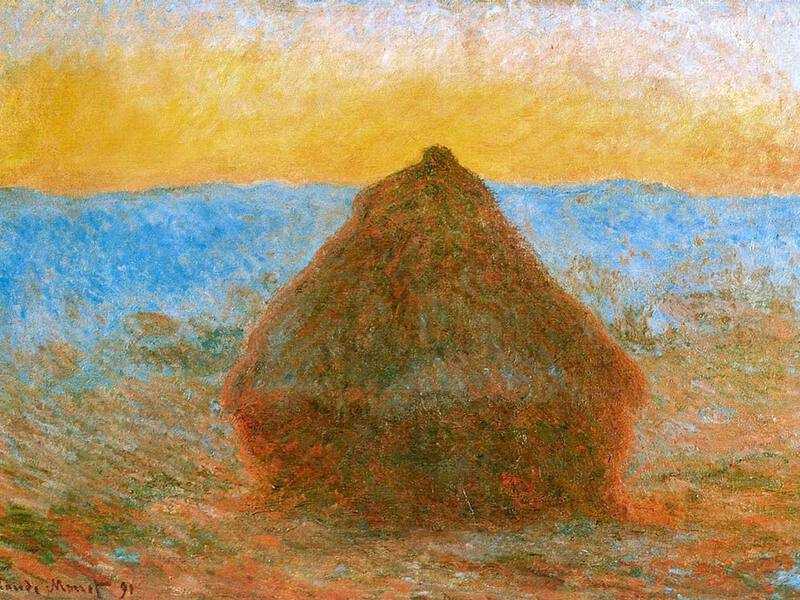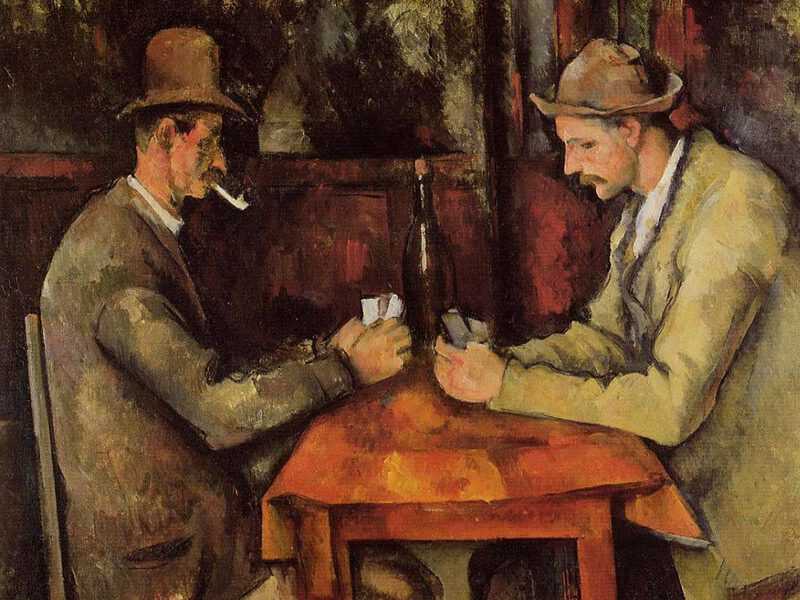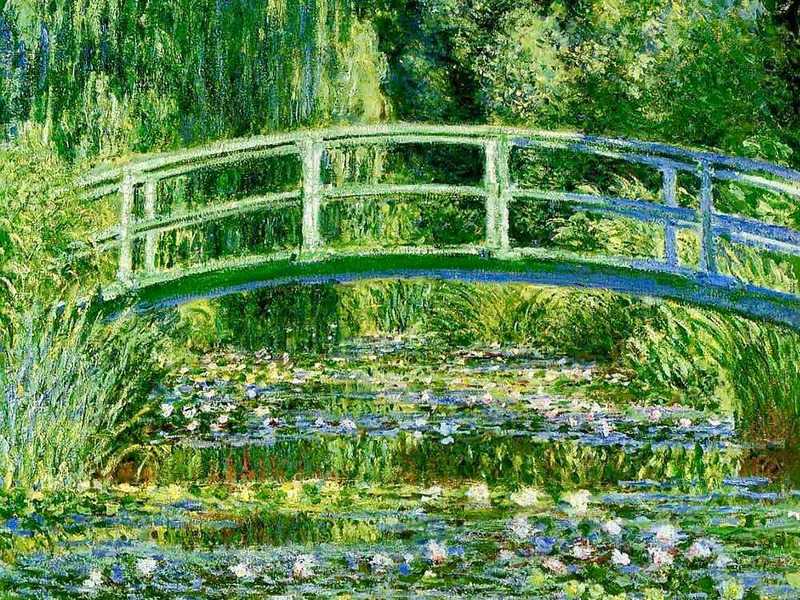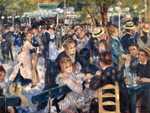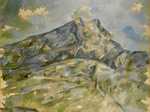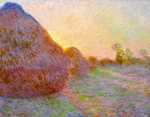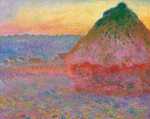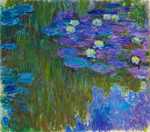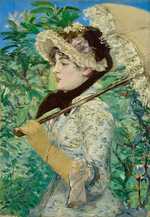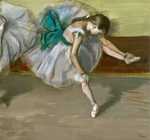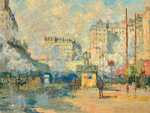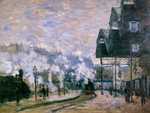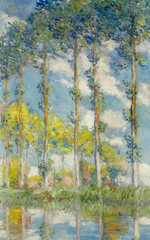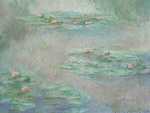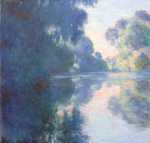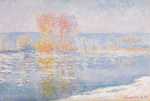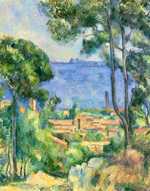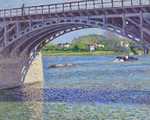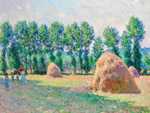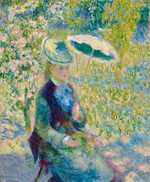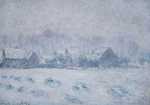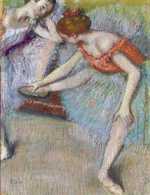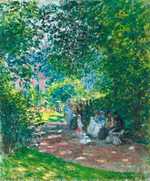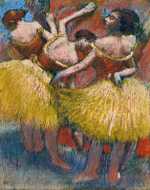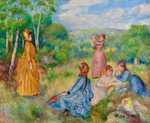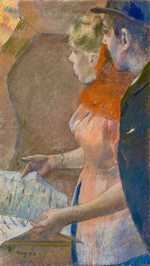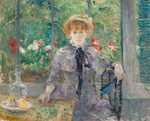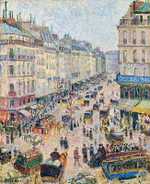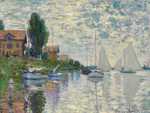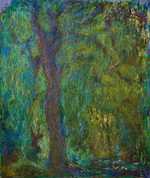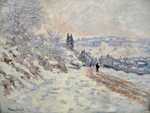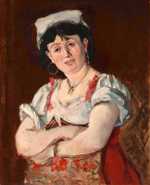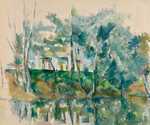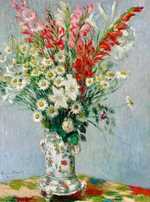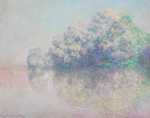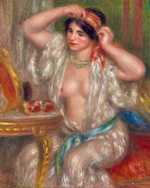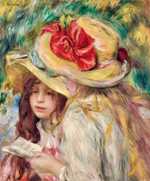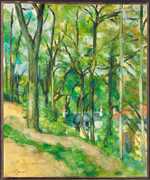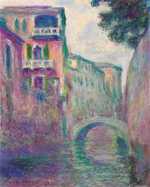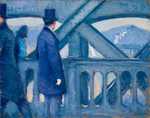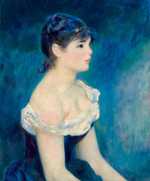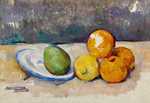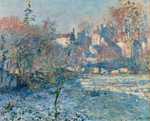1. Cezanne: The Card Players
| Sale Price: | Adjusted Price: | Date of Sale: | Buyer/Seller: |
|---|---|---|---|
| $259m | $338.4m | Feb 2002 | State of Qatar/ George Embiricos |
In early 2002, the tiny oil-rich State of Qatar purchased one of Cezanne's five Card Players for a reported price of $259 million.
The adjusted price to take account of inflation is $338.4 million.
The painting had been owned by Greek shipping magnate George Embiricos, who rarely showed it and had rejected offers for the work for decades.
Towards the end of his life he relented and entered into negotiations with the State of Qatar, finalised by his executors after his death.
The painting
Of the five versions of the Card Players that Paul Cezanne painted in the early to mid-1890s, this work is thought to be the last.
It is certainly the most stripped-back of the collection, the earliest members of which feature three card players. The men playing cards are farmhands from Cezanne's beloved Provence that the artist paid to model for him.
Interesting fact...
Cezanne was a perfectionist. He sometimes required models to pose on scores of occasions before he was happy with the portrait he was painting of them. And on occasion he ripped up the finished product because he deemed it substandard.
Painted in c. 1895, towards the end of Cezanne's life, Card Players is an iconic work: even those who are not impressionist fans are likely to recognise it.
It is remarkable for a number of reasons:
- The players are inert and totally focussed on their game, much as Cezanne was by this stage of his life obsessed by his art.
- The proportions and scale of the painting are not quite right: check out the small heads, large bodies and long arms.
- Both players retain their hats, perhaps a nod to Cezanne's father's first business (he owned a hat making company).
2. Renoir: Bal du Moulin de la Galette
| Sale Price: | Adjusted Price: | Date of Sale: | Buyer/Seller: |
|---|---|---|---|
| $78m | $187.8m | May 1990 | Betsey Whitney/ Ryoei Saito |
The smaller of the two versions of Renoir's Bal du Moulin de la Galette (Dance at the Galette Windmill) was sold in May 1990 for $78 million.
This gives it an adjusted price of a whopping $187.8 million.
The sale
The painting was sold by Betsey Whitney (a philanthropist and former daughter-in-law of John F Kennedy) to Ryoei Saito (the chairman of a Japanese paper manufacturing company) at an auction at Sotheby's New York.
At the time, it was the second most expensive painting of any type ever sold (second to van Gogh's Portrait of Dr. Gachet). It is now thought to be housed in a private collection in Switzerland, with the larger version in the permanent collection of the Musee d'Orsay. The painting's first owner was the impressionist Gustave Caillebotte.
Interesting fact...
Auguste Renoir was the son of a tailor and a seamstress. He started his artistic career at the age of 13 when he was apprenticed to a porcelain manufacturer. Renoir painted crockery for a number of years and was known by his co-workers as "Monsieur Rubens" because of his speed and skill.
The painting
The painting is of an outdoor dance area at the Moulin de la Galette, a windmill in Montmatre (then on the outskirts of Paris and now part of the city) which had been converted into an outdoor cafe and dance hall.
Painted in 1878, the work is classic Renoir. First, it is a painting of pure joy: people are chatting, flirting, dancing and generally having fun. Secondly, the painting is thoroughly modern: see the prominent use of electric lighting and the latest fashions (particularly the straw hats worn by a number of the men). Thirdly, it is painted in Renoir's characteristic style: glossy, fluid and rich.
3. Cezanne: Mont Saint Victoire
| Sale Price: | Adjusted Price: | Date of Sale: | Buyer/Seller: |
|---|---|---|---|
| $100m | $123.2m | 2013 | State of Qatar/ Esdel & Eleanor Ford House |
Mont Saint Victoire: view from the Grove of Chateau Noir is one of over forty watercolours produced by Cezanne of this imposing mountain.
It was sold in 2013 for $100 million, giving it an adjusted price of $123.2 million.
The sale
The painting was sold by the Esdel & Eleanor Ford House (a philanthropic foundation emanating from the wealth of Henry Ford) to the State of Qatar by way of private sale. The price was described by some as "astronomical", prompting the question whether the State of Qatar overpaid.
Interesting fact...
Paul Cezanne was an odd character. The first time he was introduced to fellow impressionist Edouard Manet, he refused to shake Manet's hand because he "hadn't washed in two weeks".
Cezanne and Provence
Paul Cezanne was a proud Provencal man, born and raised in Aix-en-Provence. He moved to Paris in the early 1860s to seek his fame and fortune. But it was a long time coming. His first two decades as an artist were full of rejection and hostile reviews.
Cezanne moved back to Aix in the late 1870s and thereafter focussed on its landscapes, people and still lifes composed of its products (apples in particular). He was particularly obsessed with Mont Saint-Victoire, the 1011 metre mountain close to Aix. When pastels, oils and watercolours are taken into account, he painted it over 85 times.
Painted in 1904, the work is typical of Cezanne's output at the end of his life: eyesight problems caused him to paint in a very minimalistic style, with small parts of the canvass not used at all.
4. Monet: Le Bassin aux Nymphéas
| Sale Price: | Adjusted Price: | Date of Sale: | Buyer/Seller: |
|---|---|---|---|
| $40.9m | $113.2m | June 2008 | J. Irwin and Xenia S. Miller to undisclosed buyer |
The Water Lilies are Claude Monet's and perhaps impressionism's most famous works.
This six- by three-foot version, Le Bassin Aux Nympheas (the Water Lily Pond), sold for £40.9 million at Christie's London in 2008, giving it an adjusted price of $113.2 million as of January 2019.
In total, Monet painted over 250 Water Lilies over the final three decades of his life. They vary considerably in size, colour and motif (some of lilies close up, others of ponds, bridges or featuring adjacent gardens).
Interesting fact...
Claude Monet lived much of his early life as a painter in poverty. He often sent begging letters to his friends and supporters, asking for as little as 20 francs (because, for example, the baker or the butcher would give him no more credit and he could not feed his wife and young family).
The water lilies were painted in the gardens of Monet's family home in Giverny, north-west of Paris, where Monet moved in the early 1880s and lived until his death in 1926.
Monet found peace there, after a difficult early life which involved living in penury, being routinely rejected by the conservative art establishment, the death of his first wife at the age of 32, and an (albeit half-hearted) attempt at suicide.
Le Bassin Aux Nympheas is considered an especially fine example of Monet's later works. Completed in 1919, it was signed and sold by Monet. This is by contrast with much of Monet's late output, which remained in his studios at his death: Monet was a perfectionist and great tinkerer!
5. Cezanne: Rideau, Cruchon et Compotier
| Sale Price: | Adjusted Price: | Date of Sale: | Buyer/Seller: |
|---|---|---|---|
| $60.5m | $111.5m | May 1999 | Whitney family to undisclosed buyer |
Cezanne's Rideau, Cruchon et Compotier (the Jug, Curtain and Fruit Bowl) is the most expensive still life ever sold.
It fetched $60.5 million when auctioned by Sotheby's in New York in May 1999, giving it an adjusted price of $111.5 million
Cezanne painted a number of still lifes in his later years, Rideau, Cruchon et Compotier having been painted between 1893 and 1894. Though not mentioned in the title, the painting contains a number of apples: a Cezanne favourite. The artist once remarked to his son that "With an apple I want to astonish Paris".
Interesting fact...
Paul Cezanne had a difficult relationship with his father. For example, he kept the fact that he had a son secret for almost a decade (his father discovering it when he opened some post and saw a reference to "Little Paul").
Cezanne had a particularly hard road to success. His work was routinely rejected when it was submitted to the exhibition of the Fine Arts Academy. And when Cezanne exhibited in the independent impressionist exhibitions, he was singled out for particular criticism (often being described as a "madman").
It is, then, ironic that a century later three of the five most expensive impressionist paintings are Cezannes.
6. Monet: Haystacks
| Sale Price: | Adjusted Price: | Date of Sale: | Buyer/Seller: |
|---|---|---|---|
| $110.7m | $110.7m | May 2019 | Unknown |
The Haystacks are an iconic series painted by Claude Monet in the early 1890s.
This version fetched $110.7 million when auctioned by Sotheby's in New York on 14 May 2019.
The Haystacks series
Monet moved to Giverny in 1883, but spent much of his time in the following decade travelling to places including southern France to find exotic new subjects to paint.
The Haystacks series is different: they are paintings of stacks of wheat that were a common sight in the French countryside; and they were produced a stone's throw from Monet's house in Giverny.
Sotheby's sale catagloue for its May 2019 auction rightly described the Haystacks series as the
"most definitive artistic series of the nineteenth century"
In total, Monet painted 25 Haystacks between 1889 and 1892. Fifteen of them were shown at a solo exhibition put on by Monet's dealer Paul Durand-Ruel in Paris in May 1891. Selling out within days, the series did much to establish Monet as an international superstar.
The 25 Haystacks are far from identical. They include sunrises and sunsets, paintings of the Haystacks in snow, and paintings in different seasons. They influenced both Vincent van Gogh and Wassily Kandinsky.
The painting
This version is 72.7 by 92.6 centimetres, produced in 1890 and signed "Claude Monet '91" (it was probably touched up in Monet's Giverny studio). It depicts a series of receding haystacks at sunrise and has been described as the "most evocative and glorious example" of the Haystacks series.
The painting has also proved to be a remarkable investment. When it was last sold, in 1986, it fetched just $2.5 million!
7. Monet: Haystacks
| Sale Price: | Adjusted Price: | Date of Sale: | Buyer/Seller: |
|---|---|---|---|
| $81.4m | $89.4m | November 2016 | Unknown |
Next on our list is a second member of the Haystacks series.
It fetched $81.4 million when auctioned by Christie's in New York in November 2016, giving it an adjusted price of $89.4 million.
Technically speaking
Although popularly known as Haystacks the better translation is Grainstacks: the wheat has not yet been thrashed and so contains grain, husk and hay!
The painting
Unlike the previous entry, this version of Haystacks shows the sun setting and is unique on account of its deep red hues. It was sold after a 14-minute battle involving five bidders.
It is almost exactly the same size as entry number 6 on out list (72.7 x 92.1 cms), and was also painted in 1890 and signed "Claude Monet '91".
8. Monet: Nympheas en Fleur
| Sale Price: | Adjusted Price: | Date of Sale: | Buyer/Seller: |
|---|---|---|---|
| $84,687,500 | $89m | May 2018 | Peggy and David Rockefeller to undisclosed buyer |
Monet's Nympheas en Fleur (Water Lilies in Bloom), painted during the First World War, is the second Monet Water Lily entry in our list.
It recently fetched $84.7 million when auctioned by Christie's in New York in May 2018, giving it an adjusted price of $89 million
The painting
This is another enormous painting, measuring 160.3 by 180 centimetres. But, in contrast to the first Water Lily painting on our list, Nympheas en Fleur is a study of a much smaller section of Monet's lily ponds.
It was painted in a burst of creativity between 1914 and 1917, when Monet threw himself into his work painting 60 canvasses while the first world war was taking place just hundreds of kilometres away (Giverny is about 150 kms from the Somme).
Interesting fact...
As Monet's fame spread, a number of budding mainly American artists settled close to Monet's home in Giverny. Monet hated the so-called Givernists, wanting to be left alone (one report describes him as "extremely ill-tempered"). But his step-daughter, Suzanne, ended up marrying one of them, a man called Theodore Butler.
By this stage, Monet had agreed to donate a series of his water lilies to the French state (known as the Grand Decorations). The 22 works that were bequeathed on his death measure, in some cases, upwards of six metres and are now housed in the purpose-built Musee de l'Orangerie in Paris.
This version of the Water Lilies was a study for Monet's Grand Decorations, which probably explains the particularly thick brush strokes used and why the canvas can be seen on the painting's edges.
9. Manet: Spring (Jeanne Demarsy)
| Sale Price: | Adjusted Price: | Date of Sale: | Buyer/Seller: |
|---|---|---|---|
| $65m | $89m | 7 Nov 2011 | J Paul Getty Museum Los Angeles / Unknown |
Edouard Manet's Spring is the first work by this artist on our list.
It recently fetched $65 million when auctioned by Christie's in New York in November 2011, giving it an adjusted price of $75.9 million
By 1881, when Spring was produced, Manet was seriously ill. He had contracted syphilis in his youth and it was attacking his nerves and impairing his ability to walk. He followed his doctors' orders, which normally involved taking the waters at a thermal spa, but this did little to alleviate his symptoms.
But Manet never stopped painting, though his illness often meant that he could no longer paint out of doors or in situ (his most famous late work, the Bar at the Folies Bergeres, was painted from a reconstructed bar in his studio).
Interesting fact...
Manet was urbane and witty and so had few enemies. But he fought a fencing duel with Louis Duranty in February 1870. Duranty was an art critic and one of Manet's friends. And Manet became incensed after Duranty penned an ambiguous review about one of his works. Duranty sustained a minor injury in the duel, which took place in the Forest of Saint-Germain, and the two men were friends again before too long!
Spring was the first of an intended set of four paintings, depicting the four seasons. It features a young and aspiring actress, Jeanne Demarsy. In the event, only Spring and Winter were produced before Manet's death.
The picture is important because it was the final critical success of Manet's career. Positive feedback was rare for Manet, who threw down the gauntlet to the conservative art establishment in the early 1860s with works such as Dejuner sur l'herbe and Olympia. This was one of the many ways in which Manet inspired the other impressionists.
10. Monet: Bassin Aux Nympheas
| Sale Price: | Adjusted Price: | Date of Sale: | Buyer/Seller: |
|---|---|---|---|
| $70.4m | $70.4m | 20 May 2021 | Unknown / Unknown |
May 2021 saw Monet's Le Bassin Aux Nympheas sell at auction at Sotheby's New York for a whopping $70.4 million.
The price achieved means that Le Bassin Aux Nympheas becomes the tenth most expensive impressionist painting, and confirms that the Covid-19 pandemic has done nothing to slow the market.
Focusing on the work, two things stand out.
First, the work - painted between 1917-19 and so at the tail end of Monet's life - is one of the artist's most abstract canvasses (which inspired artists like Jackson Pollock, Rothko and Richter).
Secondly, the work's sheer size: it measures 2 metres across, and was painted outside (en plein air) and in a purpose-built studio at Monet's Giverny home.
The painting has an interesting history. Passing to Monet's son, Michel, on Monet's death, it was later owned by Ray Stark (the US film producer) and displayed at the Kimbell Art Museum in Dallas between 2019 and its sale.
11. Monet: Nympheas
| Sale Price: | Adjusted Price: | Date of Sale: | Buyer/Seller: |
|---|---|---|---|
| $43.72m | $54.36m | Nov 2012 | Unknown/ Estate of Ethel Strong Allen |
Monet's 1905 Nympheas is one of the best mid-sized versions of his water lily series.
The third water lily painting in the top ten, Monet's 1905 work was sold by Christie's New York in November 2012 for almost $44 million (giving it an adjusted price of over $54 million)
Completed in 1905, about a decade after Monet first started his Water Lily series, the work uses light but not saturated colours (compare entry 7), and takes in a large portion of pond surface (compare entries 4 and 7).
Interesting fact...
Monet lived at Giverny, about an hour north-west of Paris, between 1883 and his death in 1926. In 1914, when the Germans were advancing on Paris at the outset of the First World War, he refused to leave his beloved home even when it looked like France would fall within days.
As the years went by, Monet typically painted larger canvasses, focussed on smaller areas of his ponds, and used more saturated colours. This 1905 work is therefore a good yardstick against which to assess the other Water Lilies.
12. Degas: Danseuse en Repos
| Sale Price: | Adjusted Price: | Date of Sale: | Buyer/Seller: |
|---|---|---|---|
| $37m | $51.57m | November 2008 | Unknown |
Edgar Degas' Danseuse en Repos, predominantly a pastel work, is the first entry from Degas on our list.
It sold for $37 million when auctioned by Sotheby's in New York in November 2008, giving it an adjusted price of $51,575,332.41.
Degas
Born in 1834, Edgar Degas was one of the older impressionists. He was great friends with Manet but differed in personality: he was rude and demanding.
His father's bank failed in the early 1870s meaning that Degas actually had to sell his works to survive. Fortunately, it was at about this time that he became obsessed with painting ballet dancers.
The painting
Painted in 1879, the work does not depict a ballerina on stage with the spotlight on her. The work is instead a far more intimate portrait of a ballerina stretching before or after her performance.
Degas was granted special access to the Garnier Opera House in Paris to paint and draw the dancers. The rich pastel work on this canvas appears to have been produced from an elevated platform, with Degas looking down on the dancer. This was typical of Degas' dancers series: he like to play around with viewpoints and perspective.
Interesting fact...
Degas was almost certainly an anti-Semite. Between 1894 and 1906 a political scandal rocked France surrounding the imprisonment for treason of an army officer of Jewish descent. The officer, Alfred Dreyfus, was innocent but the army top brass refused to review the evidence objectively. Over this period, Degas was a fervent and outspoken supporter of the army's position.
Experts say that some of the pastel was applied with a moistened brush and that the work also includes some gouache (an opaque water-based paint that dries to give a matte finish) to achieve a greater degree of flatness.
Danseuse en Repos was previously sold by Sotheby's in London in June 1999 for £17.6 million, smashing the estimate of £6-7 million and setting the record price for a Degas. When currency exchange and inflation are taken into account, Sotheby's New York's November 2008 sale achieved almost exactly the same price.
13. Monet: Waterloo Bridge, effet de brouillard
| Sale Price: | Adjusted Price: | Date of Sale: | Buyer/Seller: |
|---|---|---|---|
| $48.45m | $48.45m | May 2021 | Unknown |
Claude Monet's Waterloo Bridge, effet de brouillard was sold by Christie's New York for $48.45 million on 13 May 2021.
Monet's Waterloo Bridge series was started in 1899, when Monet travelled to London to paint The Thames (often from a suite in the Savoy Hotel).
Monet loved the London fog, with this work having an ephemeral, uplifting and almost other-worldly quality.
When Monet worked in London, he often had many paintings on the go at once: moving from one to the next as the light changed. At the end of his stay, he took the paintings back to his Giverny studio to tinker and re-work them.
Ever the perfectionist he was rarely satisfied with his labours.
The $48.45 million (including buyer's fees) achieved by this painting shows that impressionist paintings retain their value in the post-Covid world. Watch the frenzied bidding war on Christie's website.
14. Manet: Self-Portrait with a Palette
| Sale Price: | Adjusted Price: | Date of Sale: | Buyer/Seller: |
|---|---|---|---|
| $22m | $47.1m | June 2010 | Franck Giraud/ Steven A Cohen |
Edouard Manet's Self-Portrait with Palette is the second Manet on our list.
It sold for £22 million when auctioned by Sotheby's in London in June 2010, giving it an adjusted price of $47.1 million.
Painted in 1878, when Manet knew he was seriously ill, this work depicts Manet as he saw himself in a mirror (so he appears left-handed). He is every inch the stylish gentleman: a pearl stickpin in his black cravat, donning a black bowler hat, and with a white shirt and camel jacket.
Manet presumably wanted posterity to see him dressed for the boulevard, perhaps en route to one of his beloved cafes (initially the Cafe Guerbois and then the Cafe Nouvelle-Athens).
Interesting fact...
Manet was slightly older than the rest of the impressionists and was the first to take on the conservative art establishment. He shocked the art world with his painting of a naked and unapologetic Parisian prostitute, exhibited in the Salon in 1865. The work, called Olympia, is perhaps the most controversial work of all time.
Manet painted himself four other times. On three of these occasions, in Le Peche, Music in the Tuileries and Ball at the Opera, he makes only a cameo appearance. And Manet's only other full-sized self-portrait remained an unfinished oil sketch (entitled Self-Portrait with Cap, it can be seen in Tokyo's Bridgestone Museum of Art).
Self-Portrait with a Palette is accordingly an important work, perhaps the most significant Manet in private hands.
15. Pissarro: Boulevard Montmartre (Spring Morning)
| Sale Price: | Adjusted Price: | Date of Sale: | Buyer/Seller: |
|---|---|---|---|
| $19.9m | $38.3m | Feb 2014 | Undisclosed |
Camille Pissarro's Le Boulevard de Montmartre, Matinée de Printemps (Spring Morning) is the first Pissarro on our list.
It sold for £19.9 million when auctioned by Sotheby's in London in February 2014, giving it an adjusted price of $38.3 million.
The Boulevard Montmartre series of 14 canvasses is Pissarro's piece de resistance. Painted between 10 February and 17 April 1897, Pissarro captured the famous street at different times of the day and in different weather conditions.
His Boulevard Montmartre at night, housed in London's National Gallery, is probably the jewel in the crown and is one of our top 10 impressionist paintings.
Pissarro: a short biography
Pissarro has a long list of other achievements. Born in St Thomas in the Dutch East Indies in 1830, Pissarro was sent to boarding school in France at the age of 12 and studied the French masters. Initially drawn to the realist painting style of Corot and Courbet, Pissarro met fellow impressionists Manet, Monet and Cezanne in the early 1860s.
He went on to become the glue that held the impressionist group, and its numerous difficult characters, together. Thus, he was involved in organising a number of the independent impressionist exhibitions, and has the distinction of being the only major impressionist to have exhibited in all eight exhibitions held between 1874 and 1886.
Cezanne said of Pissarro:
"He was a father for me. A man to consult a little like the good Lord."
16. Monet: Le Palais Ducal
| Sale Price: | Adjusted Price: | Date of Sale: | Buyer/Seller: |
|---|---|---|---|
| £27,534,000 | $36.2m | 26 February 2019 | Undisclosed |
Claude Monet was remarkably industrious in his old age.
This included during a three month trip to Venice in 1908, when Monet was aged 68, which resulted in a treasure-trove of 37 canvasses.
Though the last 30 years of his life were principally devoted to painting his heavenly garden at Giverny, Monet made a number of painting trips. The most famous of them were to Rome (where he was pictured with a pigeon on his head in St Mark's Square), London (where he stayed at the Savoy and painted the Houses of Parliament and Thames) and Venice.
When he arrived in Venice, Monet was taken aback by the city's beauty. He observed: "It is too beautiful to be painted! It is untranslatable!" But his 37 canvasses proved him wrong. Amongst the most famous are San Giorgio Maggiore at Twilight and The Grand Canal.
The Palais Ducal (or the Doge's Palace) is now a museum and was the home of the Doge of Venice, the head of the former Venetian Republic. Monet draws attention to some of the Palace's architectural features, for instance its arches and a column to the left of the painting, but he really uses this canvass to paint rippling water in light and in shadow.
The Palais Ducal was the headline attraction of Sotheby's Impressionism sale held on 26 February 2019. After a bidding war between two undisclosed telephone buyers, the painting sold for £24 million (or £27,534,000 when premiums are factored in).
17. Monet: Exterieur de la Gare Saint-Lazare
| Sale Price: | Adjusted Price: | Date of Sale: | Buyer/Seller: |
|---|---|---|---|
| $32.9m | $34.6m | May 2018 | Undisclosed |
Claude Monet's Extérieur de la gare Saint-Lazare (Effet du Soleil) is the next Monet on our list.
It sold for $32.9 million when auctioned by Christie's in New York in May 2018, giving it an adjusted price of $34.6 million.
18. Monet: Exterieur de la Gare Saint-Lazare
| Sale Price: | Adjusted Price: | Date of Sale: | Buyer/Seller: |
|---|---|---|---|
| £24.9m | $34.5m | June 2018 | Undisclosed |
Another version of Claude Monet's Extérieur de la gare Saint-Lazare is the next Monet on our list.
It sold for £24.9 million when auctioned by Christie's in London in June 2018, giving it an adjusted price of $34.5 million.
19. Monet: Le Bassin Aux Nympheas
20. Monet: Poplars
| Sale Price: | Adjusted Price: | Date of Sale: | Buyer/Seller: |
|---|---|---|---|
| $22,482,500 | $29.4m | May 2011 | Undisclosed/ Undisclosed Asian collector |
Claude Monet's Poplars also makes the top 20.
It sold for $22,482,500 when auctioned by Christie's in New York in May 2011, giving it an adjusted price of $29.4 million.
Monet is famous for his series of paintings: water lilies, haystacks, poplars, Rouen cathedral, the Houses of Parliament etc. The collection of 24 poplar works were created in 1891, when Monet learned that a stand of mature poplars close to his Giverny home were to be felled. He made a deal with the lumberjack to stay their execution to give time for Monet to paint them.
The resulting collection of poplars from different perspectives, in different light conditions, and in different seasons was an instant success. Paul Durand-Ruell sold a large number of the series within weeks for prices of 3,000 to 4,000 francs.
Most are now housed in the world's leading museums, meaning that the 2011 sale of this Poplar piece was much anticipated.
Monet's technique when painting Poplars is fascinating: he worked from a floating studio, and often worked on numerous canvasses during the same painting session (sometimes changing canvass as often as once every seven minutes!).
21. Monet: Nympheas
| Sale Price: | Adjusted Price: | Date of Sale: | Buyer/Seller: |
|---|---|---|---|
| $21m | $26,460,000 | 19 June 2019 | Unknown |
Claude Monet's Nympheas sold for £21 million ($26.46 million) at Sotheby's London on 19 June 2019.
The price was a disappointment for Sotheby's, who had estimated that the work would achieve £25-£35 million. But, with buyers' fees, the price to be paid is still a whopping £23.7 million ($29.7 million).

